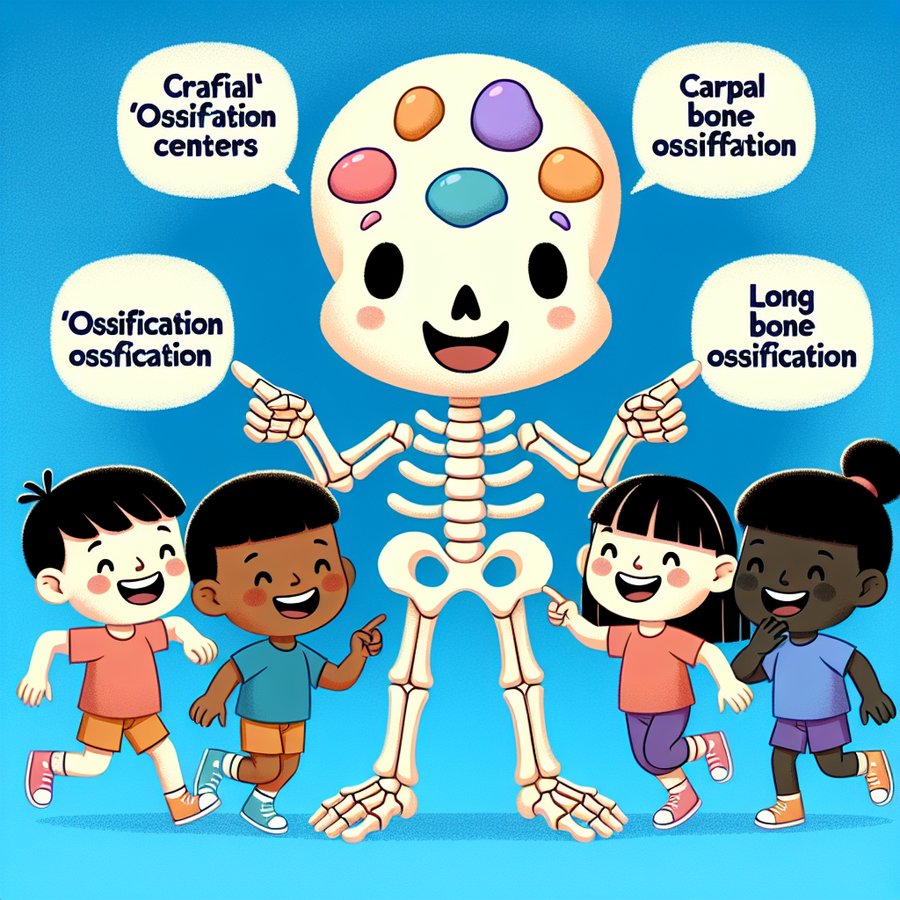Understanding the development of your baby’s bones is crucial, and ossification centers play a significant role in this process. From the moment your little one enters the world, their skeletal system undergoes remarkable changes, transitioning from soft cartilage to hard bone through a process known as ossification. This guide will explore everything new parents need to know about ossification centers, ensuring you’re well-equipped with knowledge to support your baby’s growth.
What Are Ossification Centers?
Ossification centers are specific areas in a baby’s cartilage that are the starting points for bone formation. During pregnancy, a baby’s skeleton is primarily made up of cartilage, a flexible material that allows for growth. As the baby develops, these ossification centers begin to transform cartilage into bone, a process that continues throughout childhood and adolescence. There are two main types of ossification: intramembranous and endochondral, each playing a key role in shaping the skeletal system.
Intramembranous ossification is responsible for forming flat bones, such as those in the skull, while endochondral ossification is crucial for longer bones in the body, like the limbs. Understanding these processes helps parents appreciate the complexity and wonder of their baby’s growth.
How Do Ossification Centers Develop?
The development of ossification centers is a fascinating aspect of your baby’s growth. It begins around the sixth week of pregnancy, with the primary centers appearing in the long bones. As your baby grows, these centers increase in number and size, leading to the gradual hardening and shaping of the skeletal system.
This process is influenced by various factors, including genetics, nutrition, and overall health. Proper nutrition, particularly adequate intake of calcium and vitamin D, plays a crucial role in supporting healthy bone development. Regular prenatal checkups and following your healthcare provider’s advice can ensure that ossification centers develop correctly, laying a strong foundation for your baby’s future growth and mobility.
Recognizing Concerns with Ossification Centers
While ossification is a natural part of growth, certain conditions can affect how these centers develop. One common concern is congenital skeletal anomalies, where the bones do not form correctly due to genetic factors or environmental influences during pregnancy. Conditions such as osteogenesis imperfecta, also known as brittle bone disease, highlight the importance of monitoring ossification centers’ development.
If you’re worried about your baby’s bone development, it’s essential to consult with a healthcare provider. They can perform assessments, including imaging tests like X-rays, to evaluate the progression of ossification centers. Early detection and intervention can address potential issues, ensuring your child’s skeletal system develops as it should.
Supporting Your Baby’s Bone Development
As a parent, there are several ways you can support your baby’s bone development. Ensuring a healthy diet rich in calcium and vitamin D is paramount. Breast milk or formula provides necessary nutrients during infancy, while incorporating dairy products, leafy greens, and fortified foods can benefit older babies and toddlers.
Physical activity is also essential for bone health. Encouraging play and movement helps strengthen bones and promote overall well-being. Safe exposure to sunlight can increase vitamin D levels, further aiding bone development. Remember, every child’s growth pattern is unique, and regular pediatric checkups are crucial for monitoring their progress.
In conclusion, ossification centers are integral to your baby’s bone development, evolving from flexible cartilage to strong bones that support movement and growth. By understanding these processes and knowing how to support your child’s health, you can ensure they have a solid foundation for a healthy, active life. For further information on bone development and related topics, consider exploring resources on Osteogenesis Imperfecta, Vitamin D Deficiency, and Healthy Eating for Babies.













